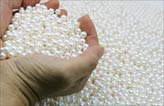View
Time to separate treasure from trash
Updated: 2011-05-31 07:27
By Xie Jian and Du Huanzheng (China Daily)
Among various waste separation models, a relatively simple waste classification and separation system adopted in many North American cities can be a good reference point for China. There, household waste is simply separated into dry recyclables (such as paper, plastic material, glass and metal), hazardous waste (which include batteries, electrical and electronic waste, paint, cleaners and fluorescent tubes), and everything else (such as food and other dirty waste that is hard to separate).
These wastes then can be sent for recycling, composting, waste-to-biofuel (ethanol or biodiesel) development and power generation. This three-stream approach is effective because it is easy to be accepted and implemented by residents and separation technology is available for it.
In Edmonton, Canada, the city government achieved 90 percent diversion of waste from landfills - the highest in North America - by adopting a simple method of residential waste classification and separation. Edmonton operates a dry waste-recycling center that separates and sends materials directly to markets. "Everything else" is largely treated through composting, biofuel development and power generation. Edmonton has significantly reduced waste disposal in landfills without incineration and successfully shut down a traditional landfill.
Taipei in Taiwan province, too, has achieved remarkable results in waste separation and recycling over a period of more than 10 years. Beginning in 1996, Taipei implemented a household waste separation policy and a "Keep Waste off the Ground" campaign, with waste management vehicles collecting all types of waste already separated by households at a fixed time every day. By 2009, residential waste had decreased from 2,970 tons to 1,009 tons a day, a reduction of more than 67 percent. Recycling has exceeded 45 percent, and the amount of waste transported to landfills in Taipei has reduced from its peak of 2,500 tons to only 59 tons a day.
Municipal waste management requires "soft" management and "hard" infrastructure both. For instance, community waste separation requires distinct transport, sorting, recycling facilities, and a series of policy management and financial incentive tools. The government needs to enhance public awareness and participation through education and communication programs. Media such as television, radio, newspapers, community bulletin boards, posters and community websites should be used to disseminate information and best practices to encourage acceptance, enthusiasm and participation of the public in waste management.
Municipal waste management normally involves hundreds of thousands of households in a city and presents many implementation challenges for local governments. It is often a difficult task for local political leaders. This explains why there has been no truly successful city experience in waste separation on the Chinese mainland.
But municipal waste management can be an important benchmark for evaluating the performance of local political leaders, and should be used as one of the criteria for determining their promotion. The public is waiting to see who will be the first person to truly solve the waste separation problem facing mainland cities.
Xie Jian is a senior environmental specialist with the World Bank, and Du Huanzheng is a professor of Jiaxing College in Zhejiang province.
(China Daily 05/31/2011 page9)
Specials

Room at the inn
The Chinese hotel industry experiences a building boom, prompting fears of oversupply.

Pearls of wisdom
Chinese pearl farmers dominate the world market but now want to work smarter, not harder

Truly a super woman
Li Yuchun first came to prominence in 2005 as the Super Girl winner, and since then has become an international star.